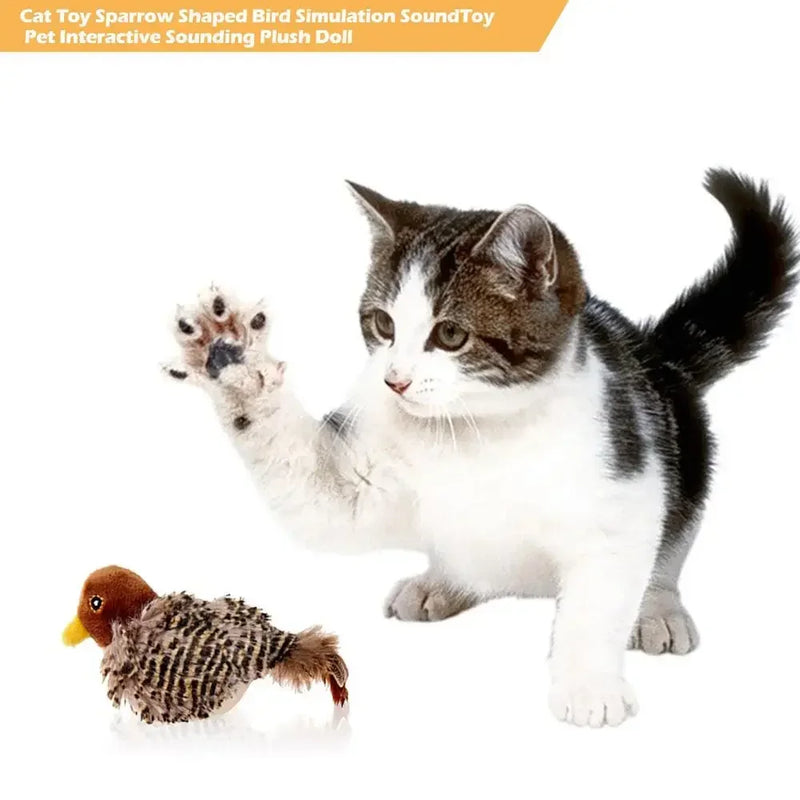
Pet Essentials Checklist for a Calm Home and Healthy Bond
يشارك
Updated on: 2025-10-24
Pet guide: table of contents
- Pet basics for a happy household pet
- How to choose a first pet (simple steps)
- Pet costs and budgeting considerations
- Common pet challenges and thoughtful solutions
- Pet comparison: pros and cons of popular companion animals
- Summary and recommendations for your next pet
- Pet Q&A: concise answers to common questions
- What is the best pet for kids?
- How much does it cost to own a pet?
- What is the best pet for small apartments?
Pet basics for a happy household pet
Welcoming a pet into your life is a meaningful decision. Whether you are considering a companion animal for company or a first household pet for your family, it helps to reflect on time, space, energy, and budget. A well-matched pet will feel secure in your home, and you will feel comfortable meeting daily needs like feeding, enrichment, and gentle training. If you are exploring pet adoption, it may be helpful to speak with local shelters or rescue coordinators about temperament and care level so you can choose a companion animal that aligns with your routine.
Start by thinking about your daily schedule. Some pets, such as dogs, thrive on regular walks and interactive play. Others, like cats or small mammals, may be more flexible but still benefit from structured attention. If your space is limited, it is kind to focus on species that adapt well to apartment living. Many people ask, “What is the best pet for kids?” The answer depends on how much time adults can commit to supervision and care, since children often need guidance to learn safe, respectful handling.
Essential supplies vary by species, yet most pets need a comfortable space, safe food and water areas, enrichment items, and a plan for cleanliness. If you are preparing to bring home a first pet, you may find it helpful to review care checklists and browse trusted essentials before you adopt. For a broad look at supplies across categories, you can explore pet supplies to get ideas for bowls, beds, carriers, and enrichment tools that match your space.
How to choose a first pet (simple steps)
If you are asking yourself how to choose a first pet, these gentle steps may help you move forward with care and clarity:
- Clarify your goals: companionship, activity, or a calm presence. Note what you hope to experience with your pet.
- List your constraints: living space, noise tolerance, allergies, travel, and time available each day.
- Match energy levels: consider whether you prefer a high-energy partner (like many dogs) or a quieter friend (like many cats, small mammals, or fish).
- Estimate total costs: plan for initial setup, monthly care, and a cushion for unexpected needs.
- Meet real animals: visit shelters or reputable sources to observe behavior, ask questions, and choose a temperament that feels right for you.
- Prepare your home: set up a calm area with essentials so your pet can settle in gently from day one.
Pet costs and budgeting considerations
Many first-time caretakers wonder, “How much does it cost to own a pet?” Costs vary across species, size, and local prices, yet a simple framework can help you plan with confidence. A realistic budget supports predictable routines and reduces stress for both you and your pet.
- Initial setup: adoption fees or purchase price, habitat or bed, food and water setup, litter or cleaning supplies, carrier or crate, ID tags, and basic grooming tools.
- Monthly care: food, litter or bedding, grooming supplies, enrichment items, and any training resources you choose to use.
- Annual and occasional: wellness visits as advised by your local professional, vaccinations where applicable, habitat upgrades, and replacements for worn items.
- Unexpected expenses: it is considerate to set aside a cushion for emergency boarding, home repairs related to pet wear, or special supplies if needs change.
- Time costs: plan for daily feeding, cleaning, exercise, and companionship, which are equally important to your budget.
If you appreciate staying informed with helpful guides, you may find more pet care ideas and gentle how-tos in the blog, which often covers seasonal checklists, adoption tips, and product spotlights to help you plan.
Common pet challenges and thoughtful solutions
Every household pet comes with learning moments. Here are common challenges and gentle solutions to support a calm, stable home.
Balancing time and attention
Challenge: Busy schedules can make it hard to maintain exercise, cleaning, and enrichment routines.
- Solution: Create a short daily checklist with feeding, play, and cleanup tasks. Share responsibilities among household members. Use simple reminders on your phone to keep routines steady.
Limited space or apartment living
Challenge: A smaller home can make energetic pets feel restless.
- Solution: Choose species that adapt well to compact spaces, or plan structured play in short, frequent bursts. Enrichment toys, puzzle feeders, and vertical spaces (for cats and small pets) help a great deal.
Noise sensitivity and neighbors
Challenge: Some pets vocalize, and thin walls can amplify sound.
- Solution: Offer predictable routines and soothing enrichment. If you live in a shared building, select quieter species, or plan calm activities around known noise triggers.
Allergies in the household
Challenge: Sensitivities to dander, bedding, or certain foods can affect comfort.
- Solution: Test exposure before adopting where possible, choose low-dander or non-shedding species, and keep shared spaces clean with regular laundry and tidy habitats.
Staying on budget
Challenge: Costs can accumulate when you add enrichment and replacements.
- Solution: Plan a monthly allotment, watch for multipurpose items, and refresh enrichment on a rotation to keep experiences new without overspending.
Pet comparison: pros and cons of popular companion animals
To support your search for the best pet for small apartments or a first family companion, the following comparisons highlight simple pros and cons. This overview is not exhaustive; it is a friendly starting point to focus your research.
Dogs
- Pros: Deep companionship, active lifestyle support, many sizes and temperaments, highly trainable.
- Cons: Require daily exercise, regular grooming for some breeds, and consistent time investment.
- Best for: People who enjoy routine walks and interactive play. Smaller, calmer dogs may suit apartment living with careful planning.
Cats
- Pros: Adapt well to various homes, independent yet affectionate, relatively quiet, use litter boxes.
- Cons: Need enrichment to prevent boredom, some can be sensitive to change, shedding varies.
- Best for: Those seeking a balanced companion animal that can thrive in apartments with vertical spaces and playtime.
Small mammals (rabbits, guinea pigs, hamsters)
- Pros: Often well-suited to small apartments, engaging to observe, can bond with gentle handling.
- Cons: Habitat cleaning is essential, some are nocturnal, handling needs vary by species.
- Best for: Households that value quiet companionship and careful, patient interaction.
Fish
- Pros: Calming presence, compact setups possible, quiet, scalable habitats.
- Cons: Require water quality management and consistent monitoring; initial setup planning is important.
- Best for: Those who enjoy maintenance routines and a peaceful visual companion.
Birds (parakeets, cockatiels)
- Pros: Social and engaging, can be very interactive, vibrant personalities.
- Cons: May be vocal, need regular out-of-cage time and enrichment.
- Best for: Caretakers who appreciate daily interaction and sound.
Reptiles (leopard geckos, bearded dragons)
- Pros: Quiet, often tolerant of modest spaces, fascinating behaviors.
- Cons: Require specific temperature and lighting; careful habitat setup is essential.
- Best for: Detail-oriented caretakers comfortable with habitat monitoring.
Summary and recommendations for your next pet
Choosing a pet is about alignment. A great match balances your energy, daily schedule, and home environment with the species’ needs. If you prefer long walks and structured play, a dog may be a joyful companion animal. If you want a quieter routine, a cat or small mammal may be comforting and engaging. For those seeking a low-noise presence, fish and many reptiles offer calm observation and careful, steady care routines.
For small apartments, look for species known to adapt well to compact spaces. Provide enrichment that fits your home, such as vertical shelves for cats or well-ventilated habitats for small mammals. If you are exploring pet adoption, it can be kind to share your preferences with a shelter or rescue so they can suggest a household pet that matches your lifestyle and experience level.
Before you bring a pet home, set up your space, gather essentials, and build a simple routine you can maintain. If you would like a quick overview of options or to find everyday gear, you can start from the home page and navigate to categories that fit your needs. If questions arise, a courteous way to proceed is to start a conversation through the contact page so you can receive guidance tailored to your situation.
Pet Q&A: clear answers to common questions
What is the best pet for kids?
The best pet for kids is the one that fits your family’s routine and supervision capacity. Some families do well with calm, well-socialized dogs that enjoy structured play and training. Others prefer cats, which may be more independent but still affectionate and playful. Small mammals can be lovely, too, though they may require gentle, careful handling and consistent habitat cleaning. Adults usually manage care and teach safe handling, which helps children build respect and confidence with a household pet.
How much does it cost to own a pet?
Total cost depends on species, size, and local prices, but planning for setup, monthly care, and a cushion for surprises is helpful. Initial costs often include adoption fees, bedding or habitat, feeding supplies, and enrichment. Ongoing costs include food, litter or bedding, grooming items, and occasional replacements. A small monthly reserve can make unexpected needs easier to manage. For budget-friendly tips and seasonal checklists, you can browse the blog when you are ready.
What is the best pet for small apartments?
Cats, many small mammals, certain reptiles, and fish can work very well in small apartments. Calm, small-breed dogs may also thrive with regular walks and enrichment. Consider noise levels, exercise needs, and space for habitats. Vertical spaces for cats, quiet enrichment toys, and well-planned habitats can make a compact home feel comfortable for a pet.
How can I prepare my home for a new pet?
Set up a dedicated area with food and water, a resting spot, and enrichment items. Remove hazards such as loose cords or small items that can be swallowed. Keep the first few days calm and predictable, and build routines for feeding, play, and cleaning. If you want a concise gear list for your setup, the pet supplies collection can help you review common essentials at your own pace.

I’m a writer who is passionate about pets

